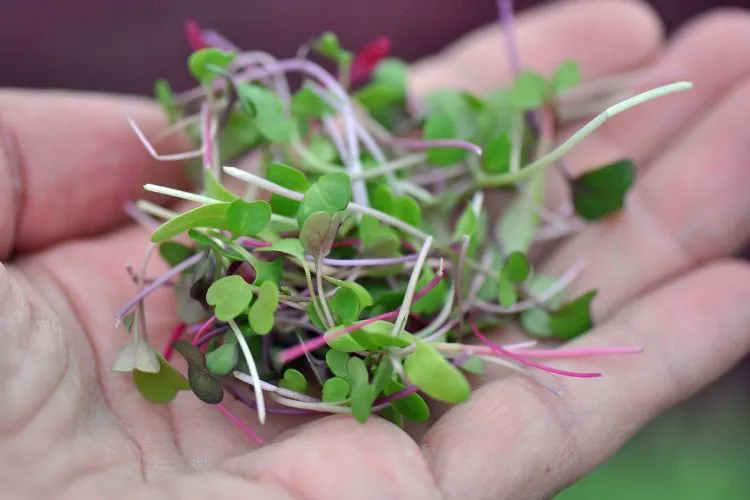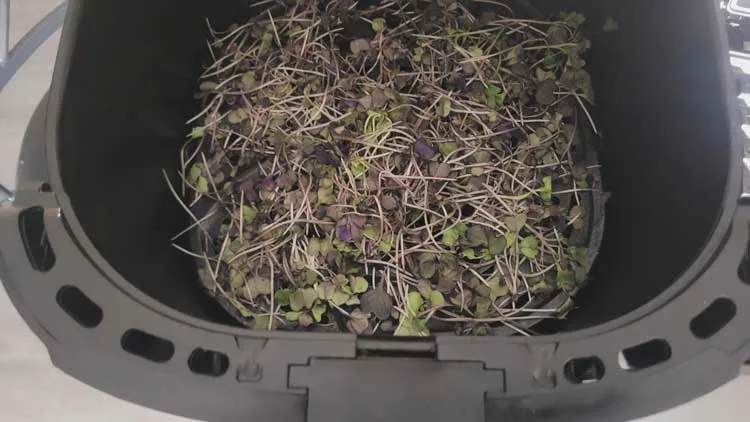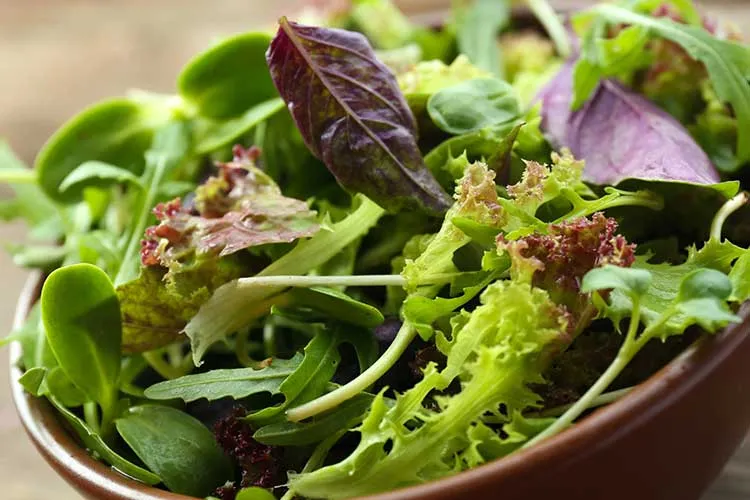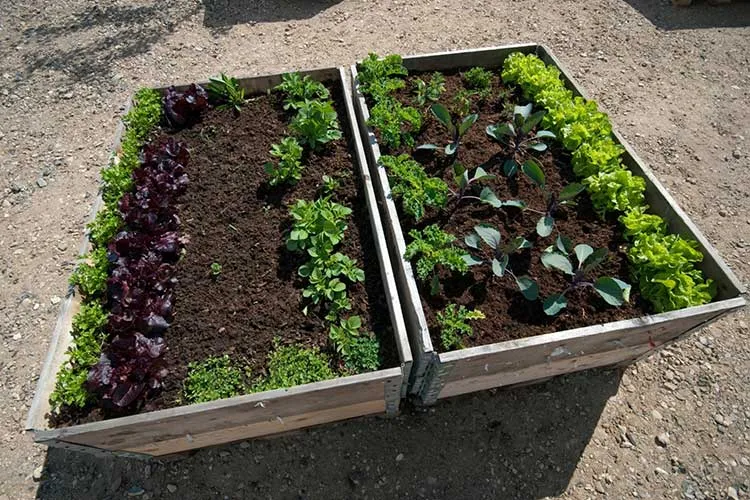Broccoli sprouts are among the fastest-growing, nutrient-dense foods you can produce at home. Still, without the right technique, they can grow too slowly, develop mold, or fail altogether. Proper rinsing, drainage, and temperature control are the key to fast, successful sprouting.
Research shows that sprouts thrive at 65–75°F, and rinsing them twice daily prevents bacterial growth while accelerating germination. Studies also confirm that fresh broccoli sprouts contain up to 100 times more sulforaphane than mature broccoli, making them a powerhouse of antioxidants.
If your sprouts take too long or turn slimy, it’s likely due to excess moisture or poor airflow. This guide will show you how to optimize your setup for the fastest, healthiest results.
Why Grow Broccoli Sprouts?
Broccoli sprouts are packed with nutrients, making them one of the healthiest foods you can grow at home. They contain high levels of vitamins C, A, and K and essential minerals like calcium, potassium, and magnesium. However, their biggest nutritional advantage is sulforaphane, a potent antioxidant known for its ability to support cellular health. Sulforaphane is formed when the sprouts are chewed or chopped, activating a natural defense system that benefits the body in multiple ways. Compared to mature broccoli, sprouts contain up to 100 times more sulforaphane, making them a concentrated source of this powerful compound.
Sulforaphane Supports Gut & Immunity
Research suggests that sulforaphane plays a role in digestion, immune support, and cancer prevention. Studies have shown that it promotes the growth of beneficial gut bacteria while reducing harmful bacteria, improving overall digestive health. Additionally, sulforaphane has been linked to enhanced immune function by increasing antioxidant activity and reducing inflammation.
Potential Cancer-fighting Properties
One of broccoli sprouts’ most widely studied benefits is their potential to combat cancer. Clinical trials have found that sulforaphane may help detoxify harmful substances in the body and slow the growth of cancer cells, particularly in breast, prostate, and lung cancer. While more research is needed, these findings highlight the sprouts’ promising health benefits.
Scientifically Proven Health Benefits
Many people wonder if broccoli sprouts are truly as good as they sound. The answer is backed by science—they offer impressive health benefits when included in a balanced diet. Unlike synthetic supplements, the natural compounds in sprouts are easily absorbed and utilized by the body. They are also a fresh, affordable way to boost nutrition without relying on expensive superfoods. Adding a handful to salads, sandwiches, or smoothies provides a quick and easy nutrient boost. With their rich concentration of sulforaphane and other antioxidants, broccoli sprouts are a simple yet powerful addition to a healthy lifestyle.
Is It Safe to Grow Broccoli Sprouts at Home?
Growing broccoli sprouts at home is safe as long as proper hygiene and sprouting methods are followed. Since sprouts grow in a warm, moist environment, they can be susceptible to bacterial contamination if not handled correctly. However, the risk is minimal when using clean equipment, high-quality seeds, and proper rinsing techniques. Homegrown sprouts often have fewer contamination risks than store-bought ones, as you have complete control over the growing conditions.
Preventing Bacterial Growth Risks
One of the main concerns with sprouting is bacterial growth, particularly from pathogens like E. coli or Salmonella. These bacteria can thrive in damp conditions, so it’s important to rinse the sprouts at least twice a day with fresh, clean water to prevent buildup.
Proper drainage is also essential—if the water sits at the bottom of your sprouting jar or tray, it can create the perfect environment for bacteria and mold. Using filtered or purified water can further reduce risks by avoiding contaminants in tap water.
Signs of Spoiled Sprouts
Checking their appearance and smell makes it easy to tell if broccoli sprouts have gone bad. Healthy sprouts should look fresh and crisp with white stems and light green leaves. They should be discarded if they develop a slimy texture, dark spots, or musty odor.
Mold growth appears as fuzzy white patches different from the natural root hairs sprouts develop. If you’re unsure, rinsing the sprouts in water can help. When rinsed, root hairs disappear, while mold remains. Storing sprouts in a breathable container in the refrigerator after harvesting will help keep them fresh and safe to eat.
What You Need to Grow Broccoli Sprouts
Growing broccoli sprouts requires only a few basic supplies, but using the right materials can make the process easier and more effective. The most important starting point is selecting high-quality broccoli seeds specifically labeled for sprouting. These seeds are untreated and tested for pathogens, ensuring safe consumption. Organic or non-GMO seeds are often the best choice since they are free from pesticides and chemicals that could interfere with sprouting.
Two main sprouting methods are using a jar or a sprouting tray. The most common jar method requires a wide-mouth glass jar with a mesh lid or cheesecloth secured with a rubber band. This setup allows for easy rinsing and draining while maintaining consistent airflow.
On the other hand, sprouting trays are flat, perforated containers that provide even drainage and can be useful for growing larger batches. Both methods work well, but jars take up less space and are ideal for beginners, while trays allow for better air circulation and more uniform growth.
See this Related Post on The Best Way to Grow Broccoli Sprouts Fast
A few additional tools help ensure successful sprouting. A fine mesh strainer or sprouting lid is useful for efficient rinsing and draining, preventing excess moisture buildup that can lead to mold. Clean, filtered water is essential, as tap water containing chlorine or other chemicals may interfere with germination.
Proper drainage is key, so jars should be tilted at an angle to allow water to escape fully after each rinse. A well-ventilated, room-temperature environment (around 65–75°F) helps maintain steady growth without encouraging bacterial growth. You can easily start sprouting fresh, nutritious broccoli sprouts at home with these simple supplies.
Step-by-Step Guide to Growing Broccoli Sprouts
Step 1: Wash and Soak the Seeds
Start by measuring two tablespoons of broccoli seeds for a standard quart-sized jar. Before soaking, thoroughly rinse the seeds under cool running water to remove dust or debris. This step helps reduce the risk of bacterial contamination and ensures a clean sprouting process. A fine mesh strainer can make rinsing easier, allowing water to flow evenly over the seeds without losing any.
Once rinsed, transfer the seeds to your sprouting jar or tray and add enough filtered water to submerge them fully. The soaking process softens the seed coat, jump-starting germination. Ideally, seeds should soak for 8 to 12 hours—overnight works well. During this time, keep the jar in a dark or shaded area at room temperature. As the seeds absorb water, they expand and activate the enzymes necessary for sprouting.
After soaking, drain the water completely and rinse the seeds with fresh water. Proper drainage is crucial at this stage to prevent mold or bacterial growth. If using a jar, tilt it upside down at an angle to let excess water escape while still allowing airflow. Now, the seeds are ready for the next step—sprouting.
Step 2: Rinse, Drain, and Start Sprouting
Regular rinsing and draining are the keys to healthy sprouts for the next several days. Twice a day, fill the jar with fresh, cool water, swirl it gently to coat all the seeds, and then drain thoroughly. This keeps the sprouts hydrated and prevents bacterial buildup. Proper drainage is just as important as rinsing. Tilting the jar upside down at a 45-degree angle allows water to escape while keeping the seeds spread out for even growth.
Keep the jar in a well-ventilated area away from direct sunlight, maintaining a room temperature of 65–75°F. The sprouts will start to grow small white root hairs, which are normal and should not be mistaken for mold. If they develop a foul smell at any point, rinse them more frequently or check for excess moisture at the bottom of the jar. Within a couple of days, you should see tiny green leaves beginning to emerge.
Step 3: Store Sprouts in Darkness
During the first few days of sprouting, keeping the jar in a dark location helps encourage strong growth. The lack of light allows the sprouts to focus on root and stem development rather than turning green too early. A kitchen cabinet or a pantry shelf works well for this stage. If using a sprouting tray, covering it with a clean cloth can achieve a similar effect.
The sprouts should remain dark for about three to four days while continuing the rinse-and-drain routine twice daily. During this time, they will grow longer and develop more noticeable leaves. Once they reach about an inch in length, they should be introduced to light for the final growth stage.
Step 4: Harvest Your Sprouts
The sprouts are ready to be harvested around day five or six. At this point, they should have small green leaves and long and firm stems. Move the jar into indirect sunlight for a few hours, which helps enhance its chlorophyll content, giving it a rich green color and boosting its nutritional value.
To harvest, give the sprouts one final rinse and drain thoroughly. If you notice seed hulls still attached, submerging the sprouts in a water bowl and gently swishing them around will help separate them. The hulls will float to the top and can be easily removed.
Once clean, transfer the sprouts to a dry paper towel and let them air dry for a few minutes. Store them in a breathable container in the refrigerator, where they will stay fresh for up to a week. Now, they’re ready to enjoy in salads, sandwiches, smoothies, or as a crunchy topping for your favorite dishes.
Essential Sprouting Tips
How to Remove the Hulls
After sprouting, you might notice small brown seed hulls still attached to your broccoli sprouts. While they are edible, removing them improves the texture and makes the sprouts easier to digest. The best way to remove hulls is to place the sprouts in a large water bowl and gently swirl them around. The hulls will float to the surface, where they can be skimmed off by hand or poured out with the water. Draining the sprouts thoroughly afterward prevents excess moisture from causing spoilage.
Storage Tips
To keep your sprouts fresh longer, store them in a breathable container in the refrigerator. A glass jar with a loose-fitting lid or a container lined with a paper towel helps absorb excess moisture while maintaining airflow. Avoid sealing them in an airtight container, as trapped moisture can cause them to spoil faster. For best results, consume sprouts within five to seven days, rinsing them lightly every couple of days to keep them crisp. If they start to smell sour or develop a slimy texture, discard them.
How Long Does It Take to Grow Broccoli Sprouts?
Broccoli sprouts typically take five to six days to harvest. The first day is for soaking, and small roots will appear by the second or third day. The sprouts will have developed small green leaves by day four or five, signaling they are almost ready. If you want to speed up the process, keeping the sprouts in a slightly warmer environment (around 70–75°F) and ensuring they receive proper airflow can help. Regular rinsing with fresh water also promotes healthy growth.
Asked Questions About Grow Broccoli Sprouts Fast
What are common sprouting mistakes, and how can I avoid them?
Oversoaking seeds leads to poor germination and mold growth. Limit soaking time to 8–12 hours. Inadequate drainage causes excess moisture buildup, promoting bacteria and spoilage. Always tilt the jar at an angle for proper water removal.
Poor ventilation slows sprouting and increases contamination risks. Keep sprouts in a well-ventilated area with consistent airflow. Irregular rinsing allows bacteria to thrive. Rinse twice daily with clean, filtered water. Maintaining the right temperature between 65–75°F ensures steady, healthy growth without delays.
How can I encourage faster growth?
Boosting the growth rate of broccoli sprouts requires maintaining an optimal environment. Keeping the temperature between 70–75°F speeds up germination. Regular rinsing, at least twice daily, prevents bacterial buildup while keeping the sprouts hydrated.
Proper drainage ensures excess water doesn’t cause mold or slow growth. Maximizing airflow by tilting the sprouting jar at an angle or using a well-ventilated tray prevents overcrowding. Using high-quality, untreated seeds enhances sprouting efficiency. Exposure to indirect light during later stages encourages quicker leaf development.
Does temperature affect sprouting time?
Temperature plays a major role in how quickly broccoli sprouts grow. Warmer conditions, ideally between 65–75°F, encourage faster germination and development.
When temperatures drop below 60°F, sprouting slows significantly, while excessive heat above 80°F can dry out seeds or promote bacterial growth. Maintaining a stable environment with proper airflow helps keep the process efficient. If sprouts grow too slowly, moving them to a slightly warmer spot can speed things up while ensuring they remain well-drained and properly rinsed.
Why are my sprouts growing too slowly?
Low temperatures, poor ventilation, or insufficient rinsing often cause slow-growing sprouts. Broccoli sprouts thrive in a temperature range of 65–75°F; colder conditions can delay germination. Lack of airflow can also slow their development, so proper drainage and ventilation are crucial.
Rinsing twice daily with clean, filtered water helps maintain hydration and prevents bacterial buildup. Clumped sprouts may struggle to grow evenly, so spreading them during rinsing can improve growth. Optimizing these factors leads to faster, healthier sprouts.







